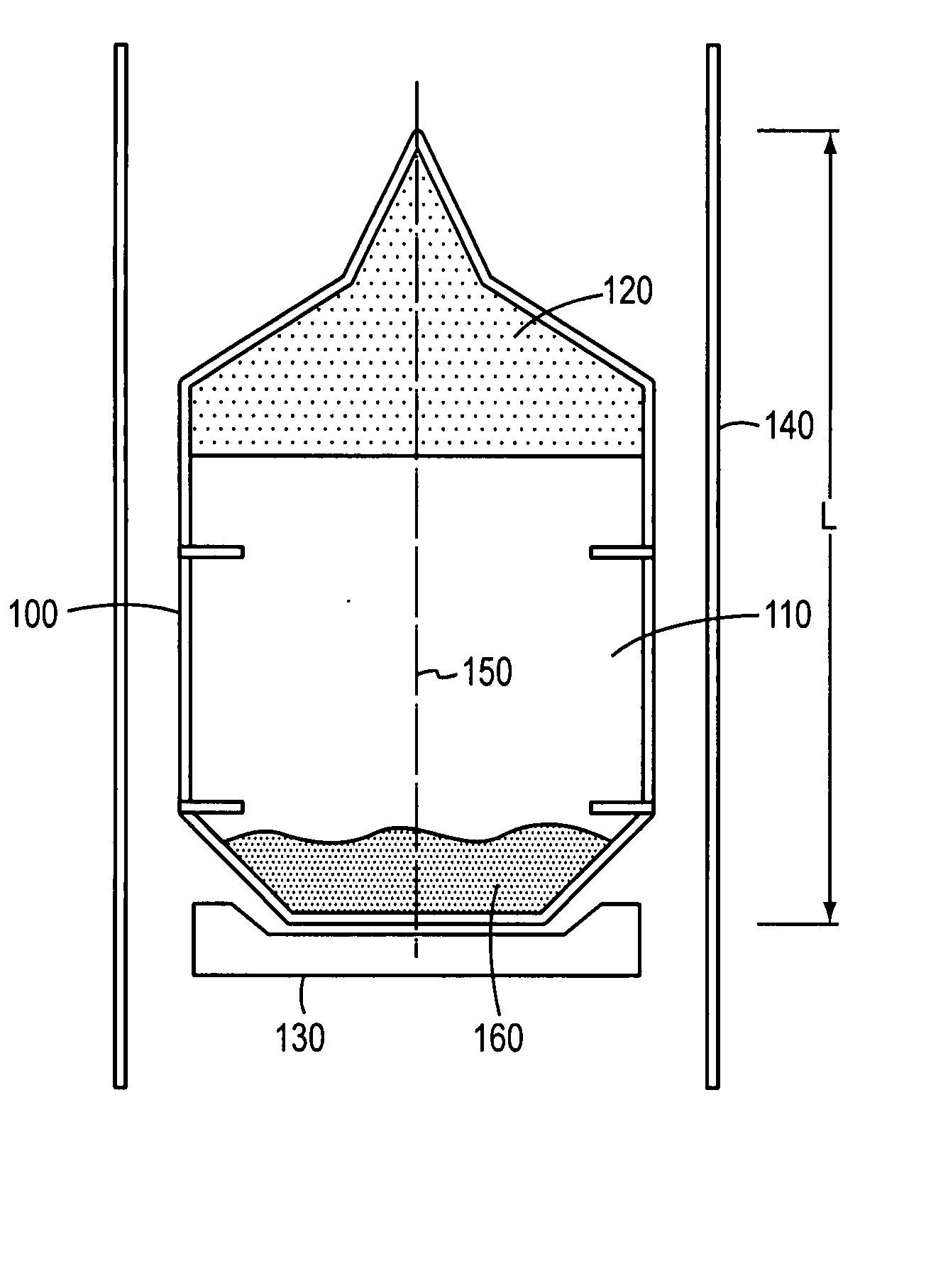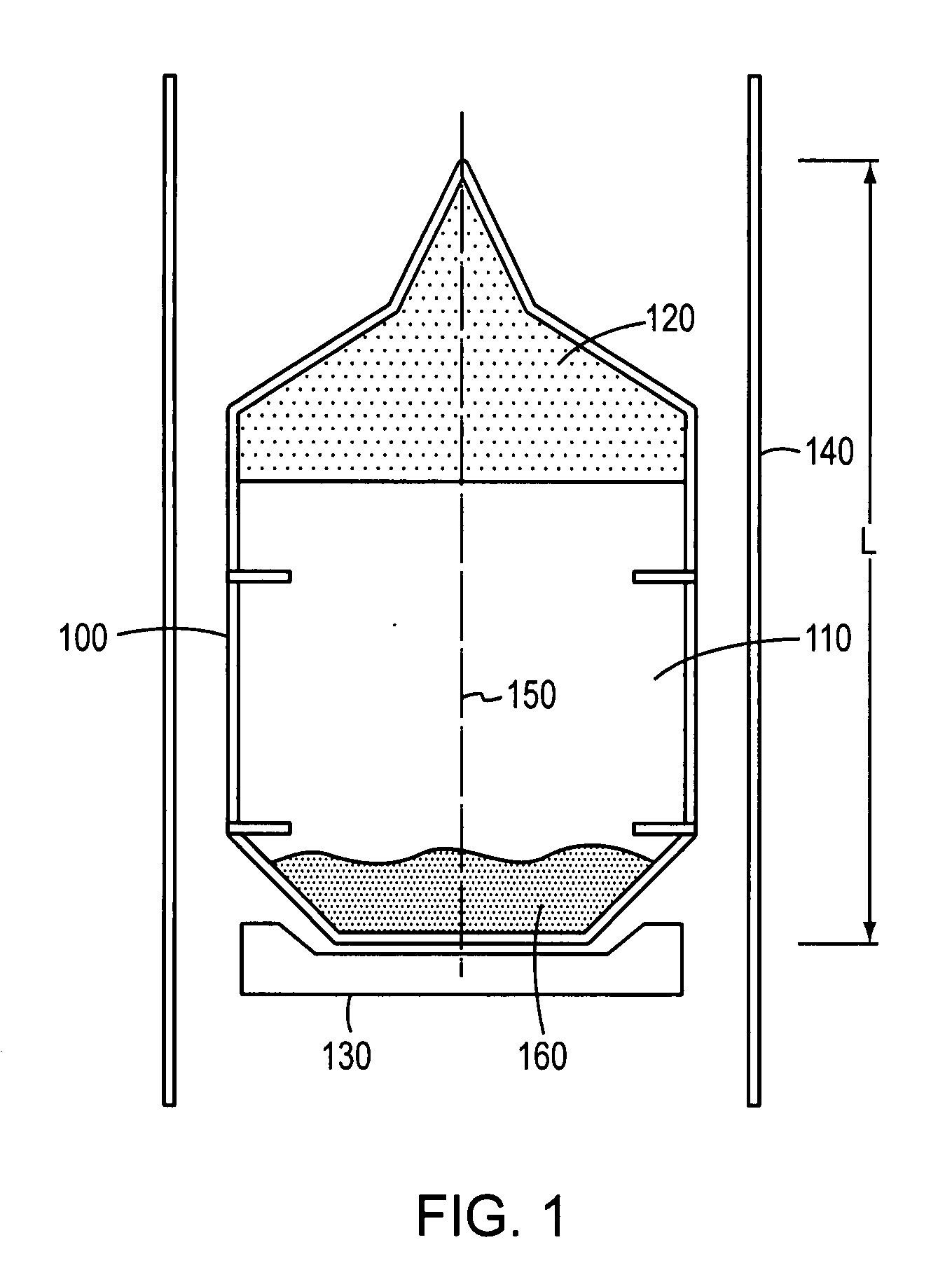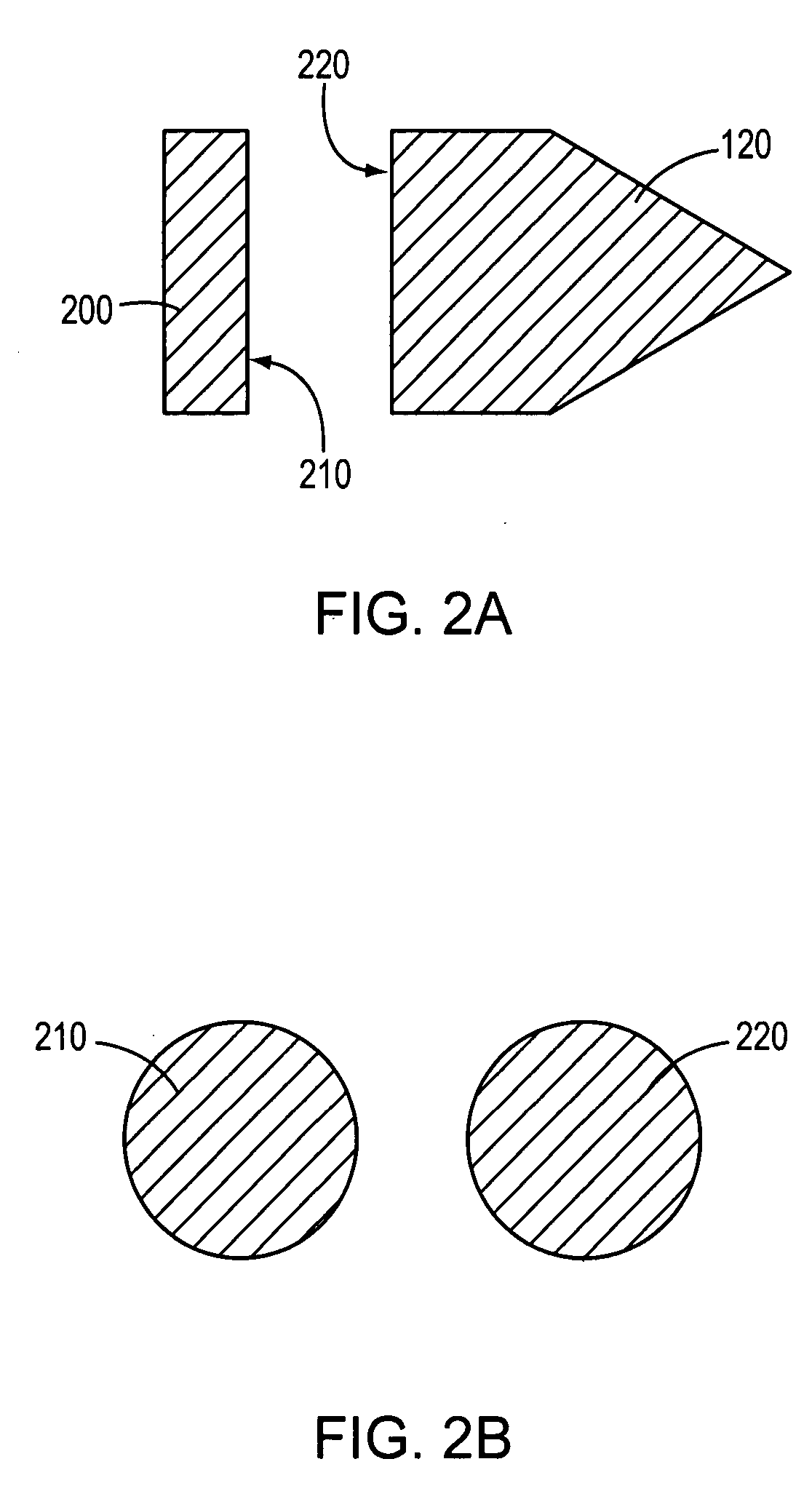Large aluminum nitride crystals with reduced defects and methods of making them
a technology of aluminum nitride crystals and defects, which is applied in the field of large aluminum nitride crystals with reduced defects and methods of making them, can solve the problems of reducing reducing the optical transparency, and reducing the number of problems, so as to facilitate the practical crystal production strategy, reduce the mv density in aln, and reduce the optical transparency
- Summary
- Abstract
- Description
- Claims
- Application Information
AI Technical Summary
Benefits of technology
Problems solved by technology
Method used
Image
Examples
Embodiment Construction
Brief Summary of the Invention
[0006] Microvoids (MVs) in AlN single crystals are a type of crystallographic defect that can be classified as an inclusion. The lateral (i.e. parallel to the c-plane) size of the MV defects typically varies from 0.1 to 3 micrometers (μm). Under low resolution (≦100×) optical microscopy, the MVs appear to be spherically shaped inclusions. However, under higher (≧200×) resolution optical microscopy, as well as when imaged using Atomic Force Microscopy (AFM), the MVs appear to have a hexagonal shape well aligned with (i.e., approximately parallel to) the c-plane. During chemical treatment (chemical etching or chemical-mechanical polishing), MVs intersecting an AlN surface leave shallow pits with a round or hexagonal shape. Also, AlN material with a significant density of MVs tends to etch faster (during chemical etching) than the material with somewhat lower MV density. Therefore, the MVs can behave as heterogeneous inclusions in the AlN solid phase. Th...
PUM
| Property | Measurement | Unit |
|---|---|---|
| Temperature | aaaaa | aaaaa |
| Temperature | aaaaa | aaaaa |
| Temperature | aaaaa | aaaaa |
Abstract
Description
Claims
Application Information
 Login to View More
Login to View More - R&D
- Intellectual Property
- Life Sciences
- Materials
- Tech Scout
- Unparalleled Data Quality
- Higher Quality Content
- 60% Fewer Hallucinations
Browse by: Latest US Patents, China's latest patents, Technical Efficacy Thesaurus, Application Domain, Technology Topic, Popular Technical Reports.
© 2025 PatSnap. All rights reserved.Legal|Privacy policy|Modern Slavery Act Transparency Statement|Sitemap|About US| Contact US: help@patsnap.com



